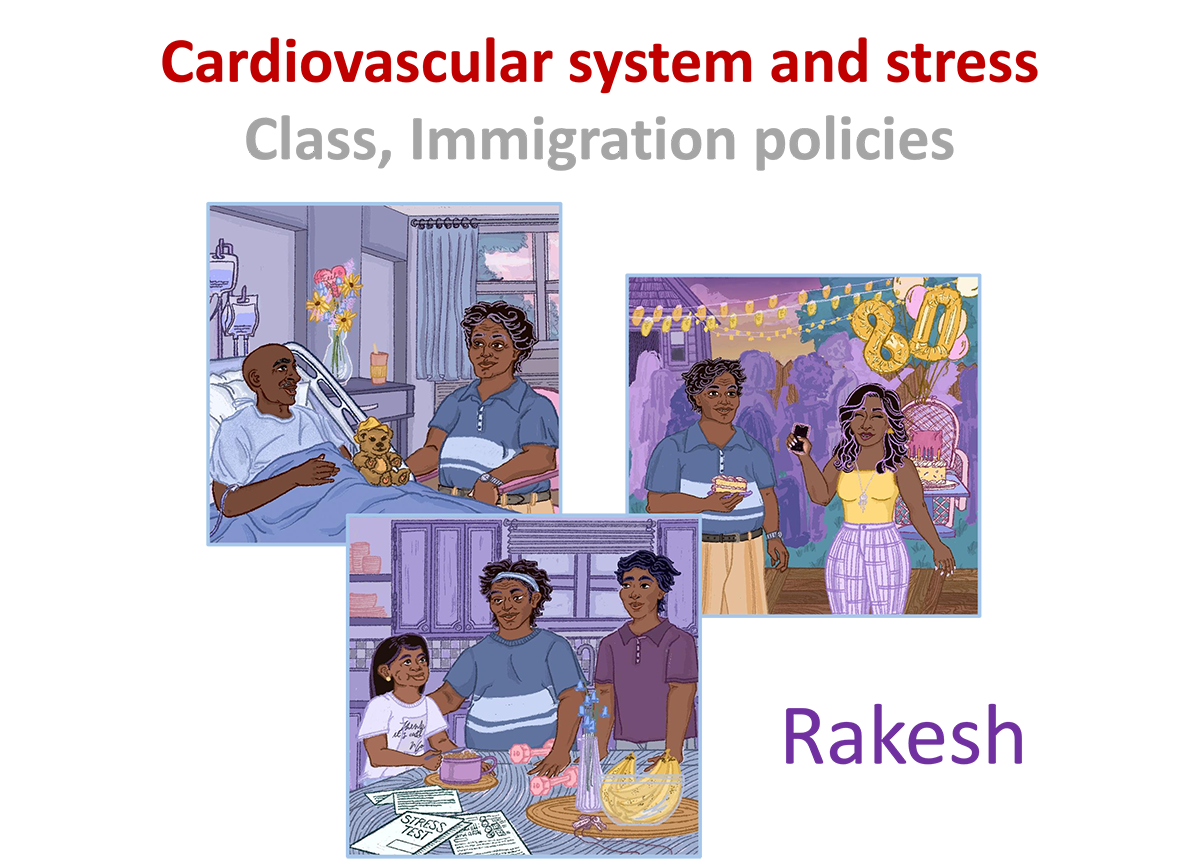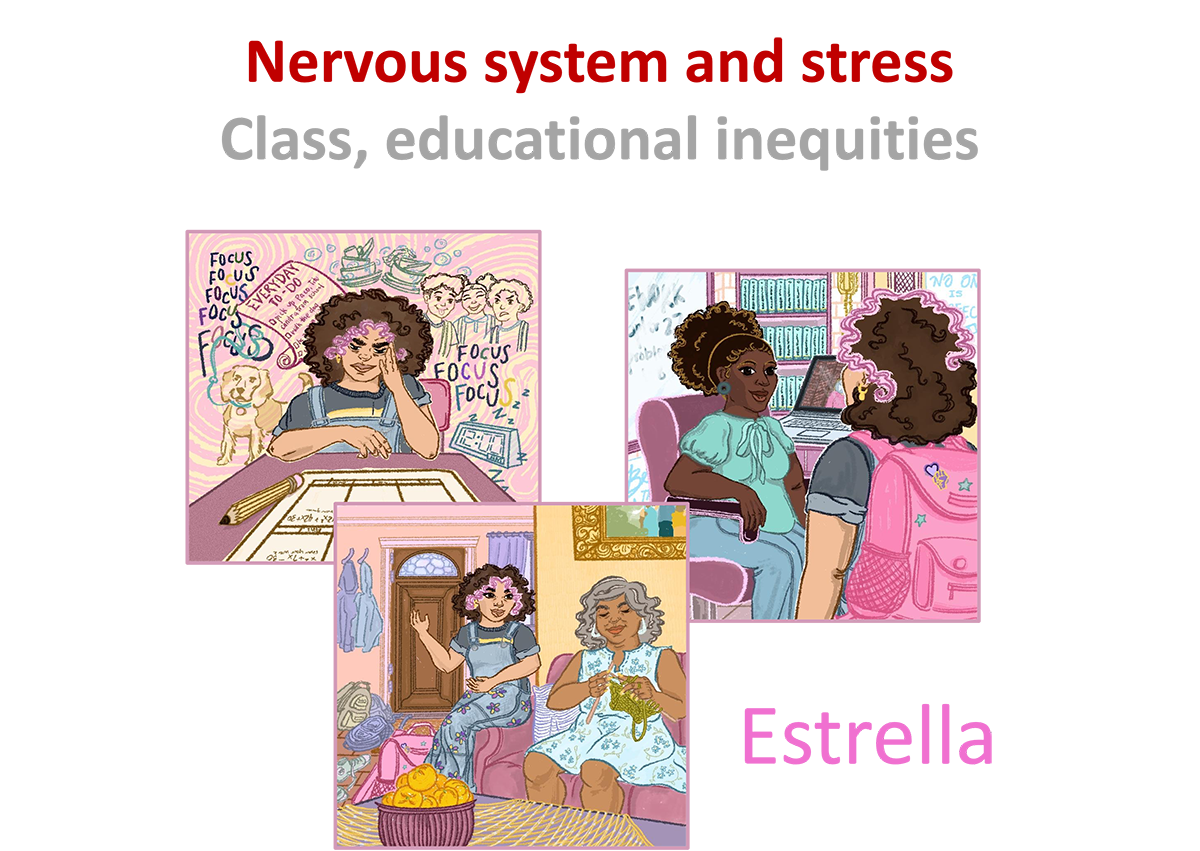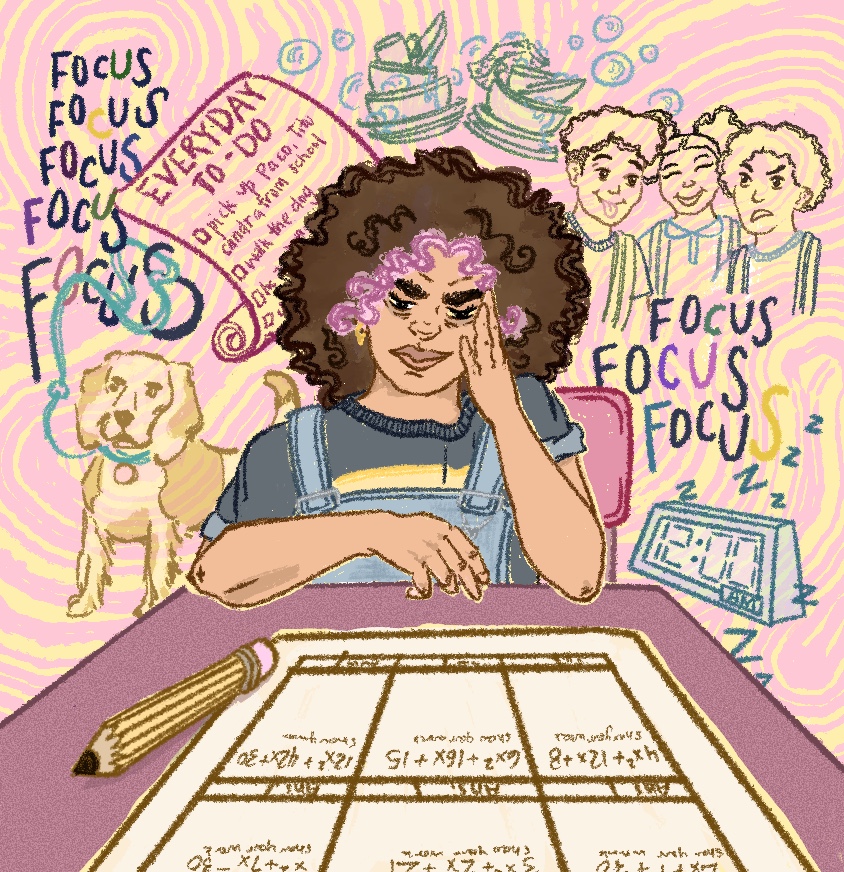Our Curriculum
The overarching goal of the Bio4Community curriculum is to support consequential learning and rightful presence of minoritized students in science classrooms.

The Rightful Presence framework for teaching and learning encourages educators to dismantle the guest-host classroom dynamics in which instructors are hosts of the classroom, free to control or revoke students’ membership in the classroom community at any time. The Rightful Presence framework explains why it is important to go beyond extending rights to collectively re-authoring rights.
Key features of the Bio4Community curriculum include:
- Targeting the rules, expectations, and structures that create inequities and injustices to develop critical consciousness and political clarity
- Valuing and leveraging community knowledge
- Using story-driven investigations to investigate phenomena entangled with sociopolitical realities
- Developing culminating advocacy and activism projects that target local injustices
This work is based on theoretical frameworks and empirical research. Learn more about our research.
Stressed Out! Unit
Stressed Out! is a justice-oriented, technology-integrated unit that invites students in grades 6-8 to investigate the relationships between how stress is manifested physiologically in their bodies and in the social interactions in their environments. The six-week unit highlights how some environmental stressors are related to broader injustices (e.g., racism, classism, sexism) that result in health disparities.
Stressed Out! was designed in close collaboration with middle school students, teachers, and a team of university-based researchers. In the early stages of our joint design efforts we identified stress (especially long-term stress) as a key health concern for the youth and their community. Chronic stress, therefore, serves as the anchoring phenomenon for this NGSS-aligned middle school biology unit. Stressed Out! addresses MS-LS1-3 and MS-LS1-8 performance expectations. (Learn more about NGSS alignment below.)
This unit progresses through five lesson sets (each approximately three to six days) in which students develop their understanding of the physiological basis of short- and long-term stress, the factors in the social and physical environments that cause stress (stressors), and how these stressors are created by larger sociopolitical forces and structures (racism, xenophobia, heteronormativity, and segregation). Students use community ethnography methods (e.g., designing and administering a survey to the school community) to figure out what causes them and their community stress in their local school environment, and work to identify the rules, expectations, and structure that underlie these stressors. Lastly, they propose sustainable changes to target unfair rules, expectations, and structures and reduce their stress.

NGSS Alignment
The Bio4Community Stressed Out! unit is designed to support three-dimensional learning that integrates disciplinary core ideas (DCIs), science and engineering practices (SEPs), and crosscutting concepts (CCCs). Centered around an anchoring phenomenon of stress in our bodies and communities, the unit consists of multiple activities and resources including video clips, interactive simulations, and community ethnography. It positions students as science experts as they make sense of the anchoring phenomenon. Students articulate and investigate their driving questions throughout the unit and propose solutions to address some of the systemic issues that create stress in their lives.
The unit is aligned with the MS-LS1-3 and MS-LS1-8 performance expectations, which are about investigating how the body is a system of interacting subsystems composed of groups of cells and how signaling in the brain is related to changes in immediate behavior or storage as memories.
Youth investigate the effects of chronic stress due to systemic inequities on different body systems and the interactions of those systems. They participate in three story-driven investigations with integrated evidence about interacting biological systems in human bodies.
For example, one story involves the interaction of the cardiovascular and immune systems in response to chronic stress related to class and immigration policies. Students investigate a variety of evidence related to cortisol levels, blood cholesterol, and immune cell signaling to build models of long-term (chronic) stress. The curriculum includes interactive animations and simulations for students to observe and investigate manifestations of stress at the cellular and system levels. In this story, students investigate how cortisol signaling and macrophage recruitment result in arterial plaque formation in a high chronic stress environment. In another story, students explore how changes in neuronal networks in the prefrontal cortex and amygdala due to stress are linked with changes in focus and anxiety.
The curricular activities engage students in studying interacting biological systems and constructing system models of the effect of stress based on the evidence embedded in the stories. The activities support students’ engaging in argument from evidence and obtaining, evaluating, and communicating information. Students study cause and effect relationships as they investigate how long-term stress affects endocrine, cardiovascular, nervous, and immune systems.

Research Basis
The Stressed Out! unit is based on empirical research about the Rightful Presence and Critical Science Agency frameworks. We use the Rightful Presence framework to support students in bringing community knowledge about sources of stress and advocacy efforts to mitigate injustices into the classroom space. We use the Critical Science Agency framework to address unfair root causes that lead to biological manifestations of long-term, ongoing stress in the school community and to propose actions to address those. Learn more about our research.
Learning Through Stories
A key feature of the unit is the incorporation of realistic fictional stories of minoritized individuals’ lived experiences of stress. Students read three different stories, each featuring a protagonist—Rakesh, Felix, and Estrella—as they set out to understand the effect of stress on their minds and bodies and how stress causes their health problems (risk of heart disease, prolonged illness, and difficulty in focusing).
The protagonists in each story obtain evidence related to stress from scientists, community members, and relatives. As students read these stories, they analyze the evidence alongside each protagonist. Students use this evidence to develop explanatory models of the interacting body systems affected by chronic stress. The stories also illustrate how unfair immigration policies, implicit racial biases of teachers, and disadvantaged segregated neighborhoods in the characters’ environments cause them chronic stress. The stories introduce the sociopolitical nature of systemic power differentials that result in the oppression of particular communities: how the ruling class and dominant culture exert power to make rules and structures that disadvantage and harm marginalized communities (people of color, LGBTQ, economically disadvantaged, differently abled, etc.). The sociopolitical elements foundational to systemic oppression are further explored in later lessons in the unit.

Rakesh’s story is about cardiovascular disease (blockages in arteries leading to heart attacks) and stress.
Read More
Felix’s story is about his prolonged and frequent illness because of stress.
Read More
Estrella’s story is primarily about her lack of focus in school, increased anxiety, and stress.
Read MoreEmbedded Technological Tools
Interactive simulations integrated into the curriculum allow students to observe how different biological systems (e.g., cardiovascular, immune, and nervous) are affected when stress is experienced. Students can change the simulation settings as they investigate cellular mechanisms by which chronic stressors affect biological phenomena such as arterial plaque formation or neuronal signaling.
Professional Learning
We will share information soon about participating in the Bio4Community Professional Learning Program. The curricular materials will be shared with the participants of the program.
Contact Us
Bio4Community supports consequential learning and rightful presence of marginalized students in science classrooms.











